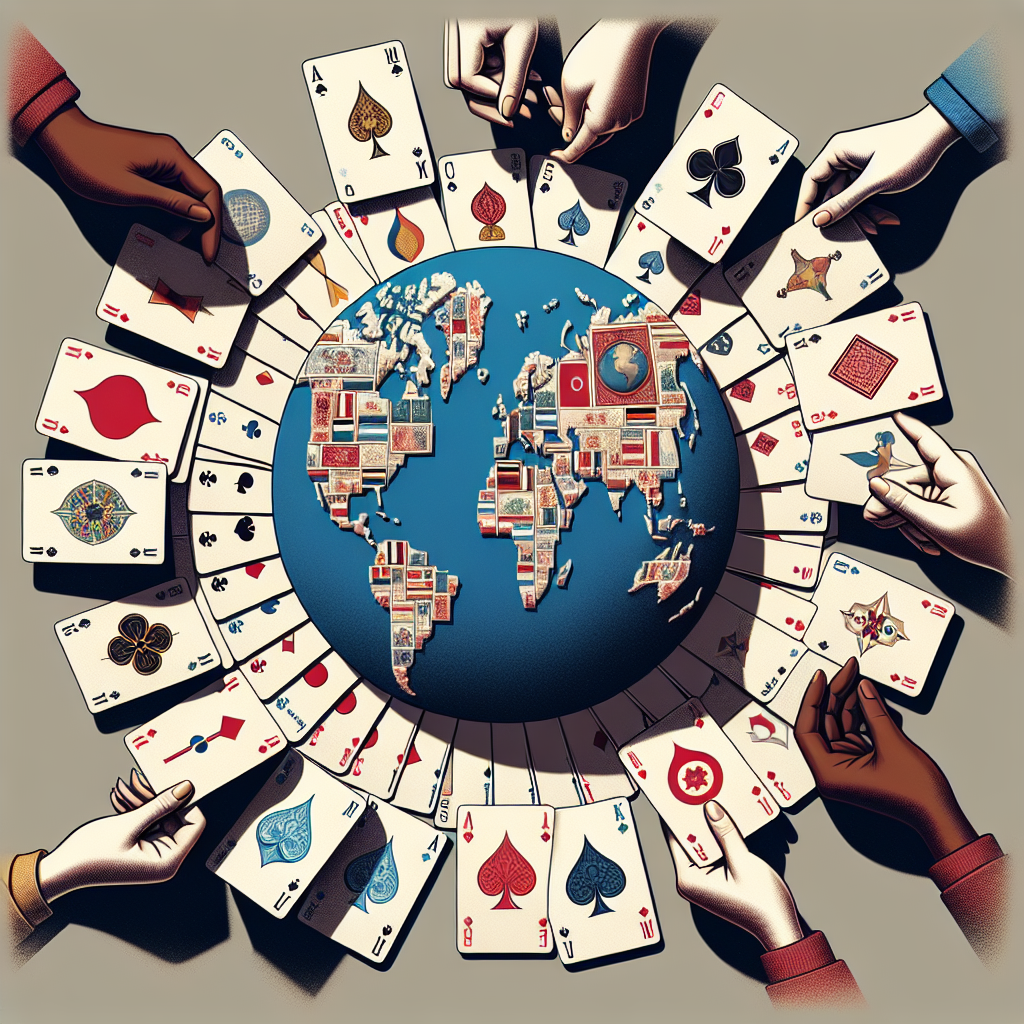A Journey Through the Deck: The Cultural Impact of Card Games Worldwide
From the bustling streets of Shanghai to the quiet parlors of Paris, card games have long served as a universal language, bridging cultures and creating connections among people. With their roots embedded in history and their evolution shaped by social dynamics, card games offer a fascinating glimpse into the cultural fabric of societies worldwide. Whether for leisurely recreation or strategic competition, these games have left an indelible mark on human interactions and the arts.
A Historical Perspective
The origins of card games can be traced back to 9th-century China, where they are believed to have emerged from earlier games using dice and dominoes. By the 14th century, card games had spread to the Islamic world and, subsequently, to Europe, where they underwent significant transformations. Various card designs, suits, and rules began to take shape, influenced by local traditions and values.
For instance, the tarot card deck, originally used for playing games in Italy during the 15th century, eventually evolved into a tool for divination, heavily influencing popular culture and arts in various regions. Similarly, games like Whist and Bridge found their niche in British high society, reflecting the social stratifications of their times.
A Mirror of Society
Card games often reflect societal structures, norms, and hierarchies. In many cultures, certain games are associated with specific social classes, age groups, or genders. Take, for example, "Piano," a popular card game in France that is often played by children, or "Hearts," which is typically a game favored by adults during casual gatherings.
In countries like India, games such as "Teen Patti" hold not only entertainment value but also cultural significance, symbolizing primal social interactions within families and communities. These games can become rites of passage, teaching young players about strategy, risk, and social bonding.
Cards as Cultural Icons
Throughout history, card games have inspired countless elements of popular culture, from literature to cinema. Many authors have employed card imagery as metaphors for chance, fate, and human motivation. In Lewis Carroll’s "Alice in Wonderland," for example, the Queen of Hearts and her court are pivotal figures that embody themes of power and chaos through card symbolism.
The adaptations of these games into digital formats have also reinforced their relevance in contemporary culture. Many popular video games now incorporate card game mechanics, leading to the emergence of a new generation of players. Online platforms have replicable games like Poker, Blackjack, and Hearthstone, leading to an expansive global community and competitive scenes that transcend geographic boundaries.
Cards and Community
Beyond competition, card games serve as critical instruments of community and social interaction. Games like "Catan" often require collaborative strategies, fostering teamwork and communication among players. The act of gathering around a table to play cards breaks down barriers and promotes camaraderie, making these games essential to cultural gatherings, family reunions, and social events.
In many parts of the world, card games are interwoven with traditional festivities. The Japanese game "Hanafuda," played during New Year celebrations, carries spiritual significance and promotes family bonding. Similarly, in the Caribbean, the game of "Pitch" often features prominently in local celebrations, adding vibrancy and collective enjoyment to the events.
The Future of Card Games
As we look to the future, the cultural impact of card games shows no signs of waning. With the rise of augmented reality and virtual reality technologies, the potential for new gameplay experiences offers exciting avenues for exploration. Imagine immersive experiences where players from around the globe interact in virtual card halls, echoing the communal spirit of traditional card games.
Moreover, social media has provided a platform for card game enthusiasts to share strategies, tips, and in-game folklore, further fostering a global community. This democratization of card games promises to sustain their relevance and adapt them to modern sensibilities.
Conclusion
The journey through the deck reveals a rich tapestry of cultural significance, social interaction, and artistic inspiration. Card games have transcended mere entertainment; they are cultural artifacts that reflect history, community, and the human experience. As long as there are players ready to shuffle the cards and deal out new stories, the legacy of card games will endure, continuing to shape and enrich cultures around the world.




